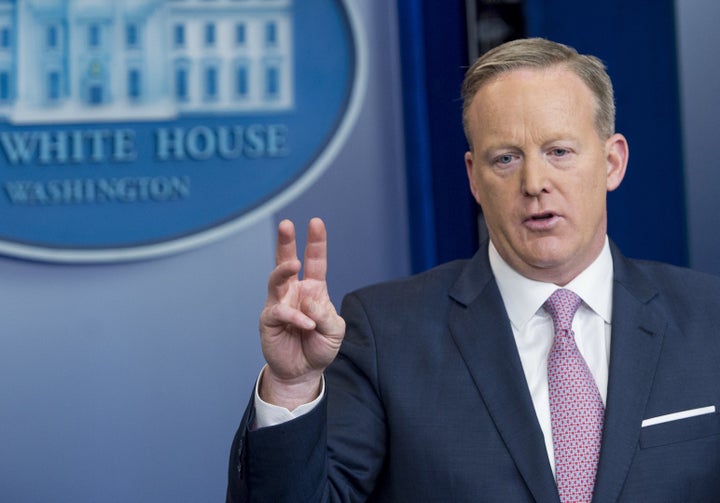
WASHINGTON ― It should be an easy, empirical question: What is the current unemployment rate? But White House Press Secretary Sean Spicer’s answer ― or his refusal to answer ― is indicative of the Trump White House’s unwillingness to play by the same facts as everyone else.
Donald Trump made clear throughout the presidential campaign that he didn’t accept the official unemployment rate as The Official Unemployment Rate, suggesting that it might be as high as 42 percent ― a number at odds with not only the Bureau of Labor Statistics, but just about every credible economist.
So at Monday’s press conference, when NPR political correspondent Mara Liasson asked Spicer what the unemployment rate is right now, she was really asking whether Trump finally agrees with the government’s assessment and trying to find out by what measurement the American people could hold Trump accountable.
Trump’s press secretary started off promisingly. “I mean, the Bureau of Labor Statistics puts it out,” Spicer said, seeming to indicate that the Trump White House would accept the current 4.7 percent as the true unemployment rate. But he quickly caught himself. When Liasson asked whether Trump and the White House now accept that the bureau’s numbers are accurate, Spicer began deflecting.
“It’s not a question of what I accept,” he said. “I mean, there are ways that you can put out full unemployment.”
By that, Spicer seemed to mean there are different ways of looking at unemployment data. You can accept the unemployment rate as it’s currently defined as the unemployment rate, or you can consider other metrics, such as the labor force participation rate, which measures the percentage of the population that is either employed or unemployed but looking for work. (Some economists suggest that the unemployment rate is artificially low because it doesn’t count “discouraged workers” — people who have given up on looking for a job. But FiveThirtyEight’s analysis of the unemployment rate last year, which counted discouraged workers, found the “true” rate to be close to the official statistic.)
Trump’s estimates varied wildly during the campaign, but he seems to think the labor force participation rate is a better metric.
Spicer suggested the Trump White House would measure itself less against actual statistics and more against anecdotal evidence and the feeling among the American people that they could find work.
“It’s not just a number to him,” Spicer said of the president. “It’s about ― it’s someone getting by. Are their wages going up? Can they get a better job?”
He added that Trump was “not focused on statistics as much as he is whether or not the American people are doing better as a whole.”
This was the same press briefing where Spicer said he thought people could “disagree with the facts” and doubled down on his insistence that Trump’s inauguration was the most watched of all time, despite the TV ratings and clear photographic evidence of the crowd size.
The question isn’t just whether Trump’s White House will accept government statistics, however. It’s also about trying to hold the administration accountable over time, especially if the unemployment rate does rise. Had Spicer given a full endorsement of the 4.7 percent unemployment rate, it would be difficult for the administration to argue that Americans shouldn’t use that statistic.
But although Spicer came close to accepting the official rate, he wiggled out of a real answer. Perhaps it’s a question worth asking again.
Nick Baumann contributed to this report.
